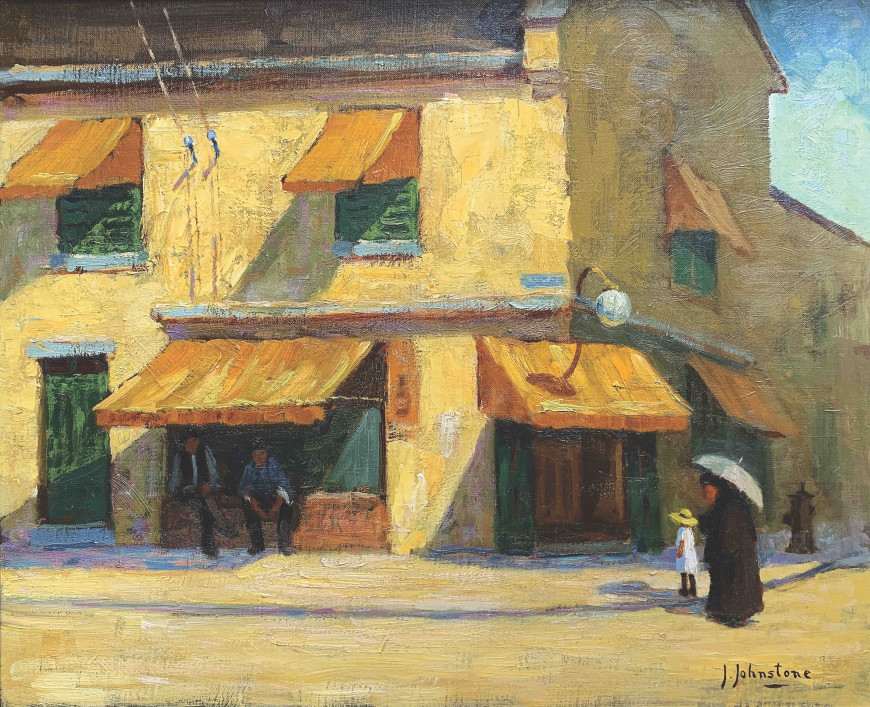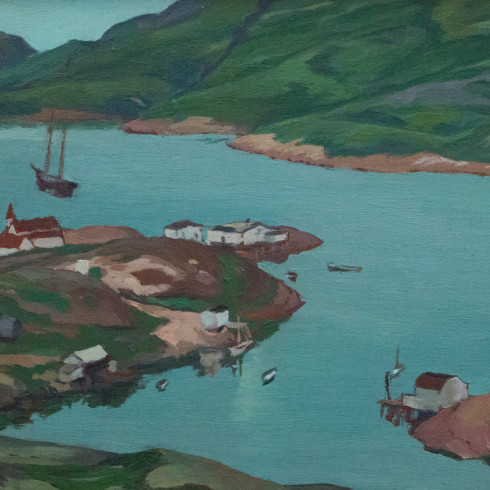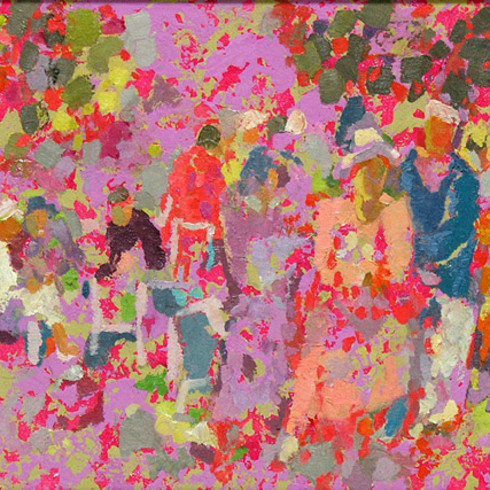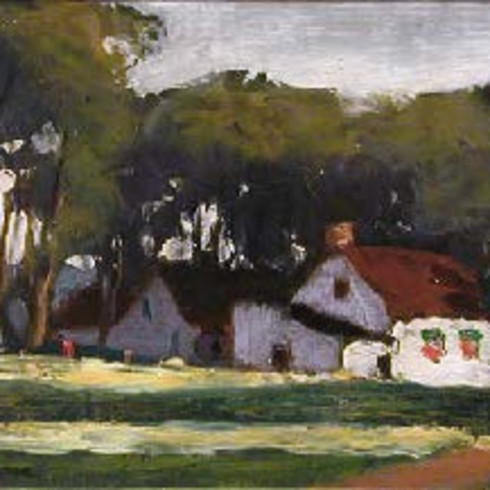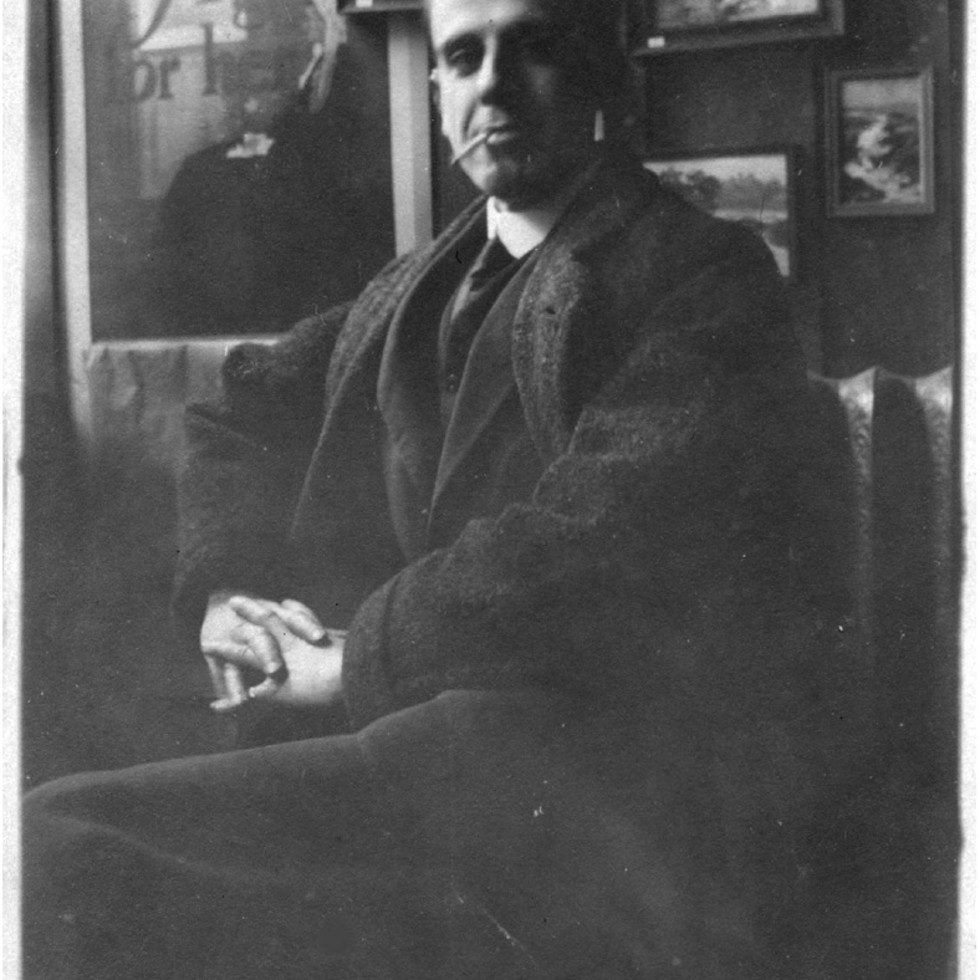Ventes notoires
The Corner Store - L’épicerie du coin (La Gauchetiere Street, Montreal), 1919
48.3 x 58.4 cm
Provenance
Galerie Walter Klinkhoff Inc., Montreal;Private collection, Montreal.
Expositions
Galerie Walter Klinkhoff, Montreal, John Y. Johnstone Retrospective Exhibition, September 17 - October 1, 2005, cat. no. 12;Montreal Museum of Fine Arts, The Beaver Hall Group, 1920's Modernism in Montreal, October 24, 2015 - January 31, 2016.
“John Y. Johnstone seems to be the only painter of his era to have left us some fleeting images of Montreal’s Chinatown. Among the five small known works in which he depicts a Chinese immigrant alongside a wall in the neighbourhood, this one is the most accomplished, with an economy of means, a rich palette of yellows, greens and purples, and an arresting contrast of light and shadow in which two figures drawn from life seem to observe us...," Jacques DesRochers, wrote referring to The Corner Store [1].
The Corner Store reveals a modern Canadian artist painting in a personal interpretation of post impressionism. He is a virtuoso of creating on canvas the sense of heat in Montreal’s summer sunshine.
Chinatown was situated less than a 10-minute stroll from where Johnstone was living until 1920 with his widowed mother. The Monument National where he was teaching in the 1920s is located a stone's throw from Chinatown. While any number of artists of his day found composition immediately to the east and to the west of Chinatown, the small body of Johnstone's work in Montreal's Chinatown is unique in the canon of painting in the metropolis [2]. Since so little is known about John Young Johnstone personally, the extraordinary but small body of his paintings where he finds composition in Montreal's Chinatown, has evoked a biography of mythical status. Please visit John Young Johnstone: Myth and Modernism for an important appreciation of the artist.
From 1915, the beginning of John Young Johnstone's albeit too short mature career as an artist and through 1924, the National Gallery of Canada purchased six paintings by John Young Johnstone. In 1920, Quebec's Prime Minister Taschereau authorized the establishment of the Quebec Museum, to be opened two years forward. Under the Secretary of the province, The Honourable Athanase David, a jury was organized to select 6 paintings from the Art Association of Montreal and Royal Canadian Art exhibitions of that year to be the foundation for the future museum, one of which was Johnstone's Old Courtyard, St. Vincent Street [3]. The following year, Montreal's La Presse, in their review of that now iconic Beaver Hall Group exhibition of 1921 held over at 305 Beaver Hall Hill, cited among the most interesting works in the exhibition a small painting by Johnstone of Rue des Carrieres calling it “a real gem” (“un vrai joyau”) [4] [5]. The conclusion arrived at from the above is that in his day John Young Johnstone was an artist of distinction, one whose paintings stood out among those of his most accomplished peers.
Endnotes
1. Jacques Des Rochers and Brian Foss, et al., 1920s Modernism in Montreal: The Beaver Hall Group, (Montreal: Montreal Museum of Fine Arts, 2015), p. 191
2. Ibid.
3. According to Michele Grandbois, “Suzor-Coté et la collection du Musée National des beaux-arts du Québec”, Journal of Canadian Art History, Vol. XXVI, 2005, p. 148, the other paintings selected were what are now iconic paintings by Albert Robinson, Suzor-Cote, Clarence Gagnon, Maurice Cullen and Alice Des Clayes.
4. "Au fil de l'heure: Le Groupe Beaver Hall", La Presse, 20 January 1921, p. 2
5. The Johnstone of Rue des Carrieres called “a real gem" “"un vrai joyau”) in that Thursday edition of La Presse on January 20, 1921 may in fact be the same sketch he exhibited and offered for sale unsuccessfully at a price of $20 in the Art Association Exhibition of 1917.



